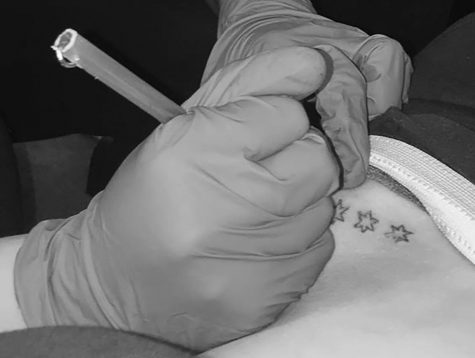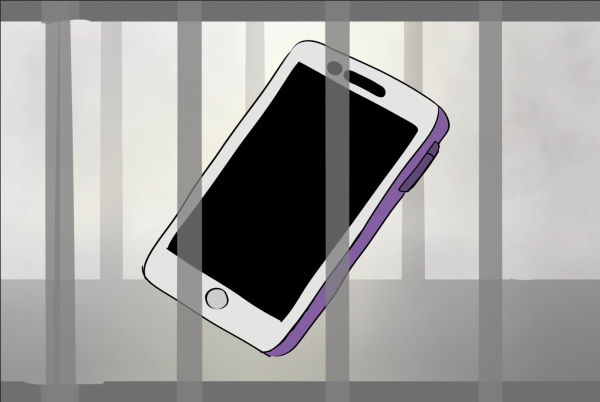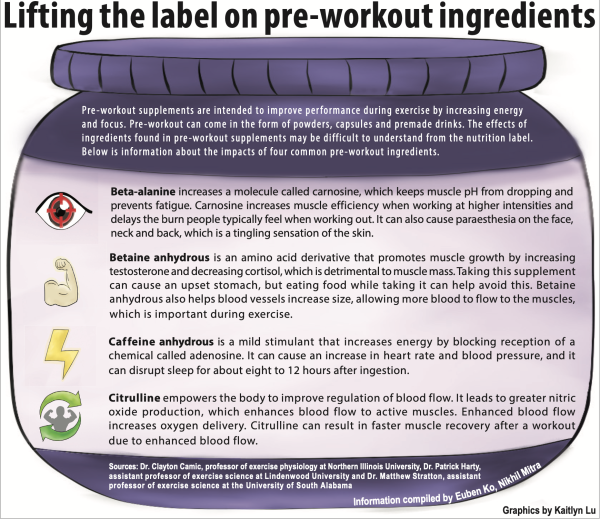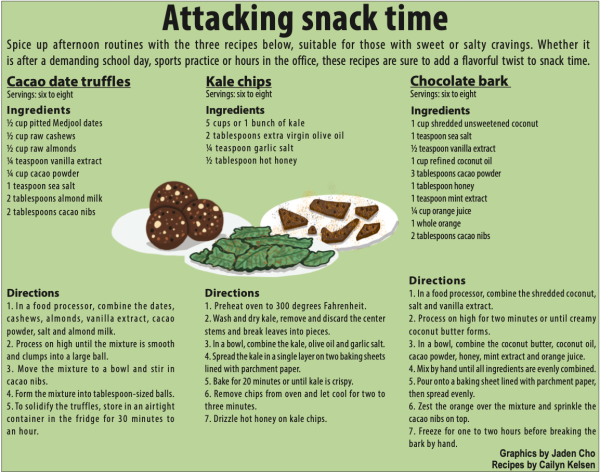Students take a stab at tattooing trend

Photo by Hope Mailing
Ever since he could remember, junior Andy Friedman has wanted a tattoo. But, it was not until a few months ago that he got his first one. Soon after that, he decided to add two more tattoos to his collection.
“[Tattoos are] just a cool way of showing your interests and your ideas … and expressing yourself,” Friedman said.
Friedman’s tattoos depict the number 0114 on his finger, representing his favorite band “Arctic Monkeys,” an eye on his elbow and an hourglass on his chest.
Friedman chose the “stick and poke” method for all of his tattoos. This tattoo technique has grown in popularity due to its accessibility and the ease with which it can be performed on people.
According to Friedman, his tattoos were inked using supplies that are purchasable online. The person tattooing him drew the outline on his skin and used a heated needle to puncture the skin over the previously drawn design.
“It wasn’t the most pleasant [feeling], but I was trying to tell myself that the pain doesn’t really matter because it will be over soon, and the result would be worth it,” Friedman said.
Despite the pain he experienced during the process, Friedman said he chose the stick and poke method because he thought it would be a lot less painful than being jabbed repeatedly with an electric tattoo gun.
Kurt Jacobsen, owner of Unbreakable Ink, a tattoo shop in Rolling Meadows, said in an email interview DIY methods of tattooing are always ill-advised by professional tattoo artists because of the lack of experience and knowledge about safety precautions that untrained artists have. Younger people tattooing each other with their own supplies increases potential health concerns.
“There are many safety precautions to take in regards to making an environment as safe as possible when dealing with blood or other potentially infectious material,” said Jacobsen. “The general rule is that anything touching a client during a procedure must be either disposable and single use or [covered] with something to minimize direct contact with all surfaces.”
The two biggest risks are lack of cleanliness and the potential for physical trauma when doing stick and poke tattoos, according to Jacobsen.
“It’s very difficult, especially when not educated, to maintain a clean enough facility to safely practice tattooing,” Jacobsen said.
Sheryl Hoyer, dermatologist at Northwestern Medicine in Grayslake, said in an email interview she has treated patients who have developed health issues due to professional tattoos. The majority of these issues that arise amongst her patients are due to allergic reactions, not infections. Allergic reactions from tattoos often happen because of a single color, so only areas with that particular color of ink on the skin will get irritated.
“The swollen areas can even become granulomas, which are hard nodules formed by your immune system around something it thinks is foreign,” said Hoyer. “Since the best way to [prevent an allergic reaction] is avoidance, you can imagine how hard it is to ‘cure’ a reaction to the tattoo.”
According to Hoyer, infections associated with stick and poke tattoos could be a simple staph or strep infection or it could be a more complicated atypical mycobacterial infection, a deeper infection from the family of organisms that tuberculosis is in.
“This type of infection is not only difficult to diagnose because it requires cutting into the skin for a sample to culture but [is] also difficult to treat,” Hoyer said.
Friedman has not experienced any serious health issues, allergic reactions or infections since getting his third tattoo, despite using a method that is considered to be unsafe.
“The next day, it usually just feels like a bruise, and it gets better after that,” said Friedman. “Sometimes it scabs up a little, but it goes away.”
The reason why the stick and poke method of tattooing has become so popular despite its risk is because of how genuine it is for the person getting it, according to Friedman.
“I feel like people are doing what they want more nowadays, and they’re expressing themselves in different ways,” said Friedman. “Since this is kind of an easy way [to get tattooed] and a lot of people think it’s cool, [the popularity] has grown.”








